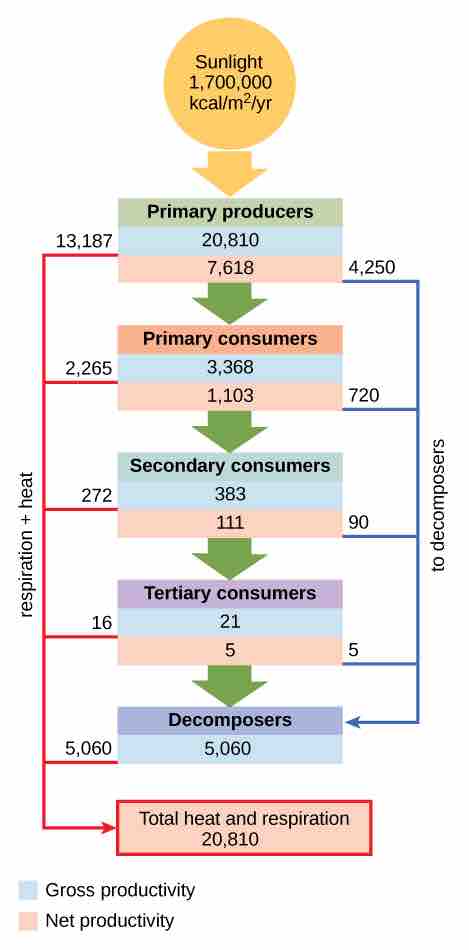Productivity within trophic levels
Productivity within an ecosystem can be defined as the percentage of energy entering the ecosystem incorporated into biomass in a particular trophic level. Biomass is the total mass in a unit area (at the time of measurement) of living or previously-living organisms within a trophic level. Ecosystems have characteristic amounts of biomass at each trophic level. For example, in the English Channel ecosystem, the primary producers account for a biomass of 4 g/m2 (grams per meter squared), while the primary consumers exhibit a biomass of 21 g/m2.
The productivity of the primary producers is especially important in any ecosystem because these organisms bring energy to other living organisms by photoautotrophy or chemoautotrophy. Photoautotrophy is the process by which an organism (such as a green plant) synthesizes its own food from inorganic material using light as a source of energy; chemoautotrophy, on the other hand, is the process by which simple organisms (such as bacteria or archaea) derive energy from chemical processes rather than photosynthesis. The rate at which photosynthetic primary producers incorporate energy from the sun is called gross primary productivity. An example of gross primary productivity is the compartment diagram of energy flow within the Silver Springs aquatic ecosystem . In this ecosystem, the total energy accumulated by the primary producers was shown to be 20,810 kcal/m2/yr.

Energy flow in Silver Springs
This conceptual model shows the flow of energy through a spring ecosystem in Silver Springs, Florida. Notice that the energy decreases with each increase in trophic level.
Because all organisms need to use some of this energy for their own functions (such as respiration and resulting metabolic heat loss), scientists often refer to the net primary productivity of an ecosystem. Net primary productivity is the energy that remains in the primary producers after accounting for the organisms' respiration and heat loss. The net productivity is then available to the primary consumers at the next trophic level. In the Silver Spring example, 13,187 of the 20,810 kcal/m2/yr were used for respiration or were lost as heat, leaving 7,632 kcal/m2/yr of energy for use by the primary consumers.